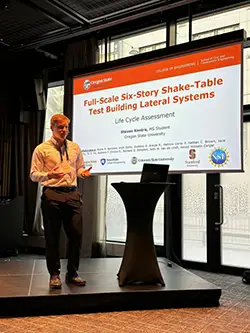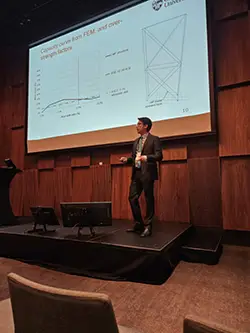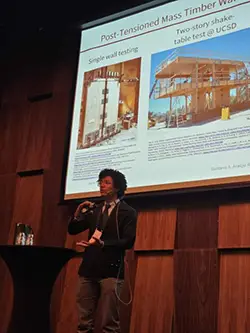NHERI Converging Design – Tasks
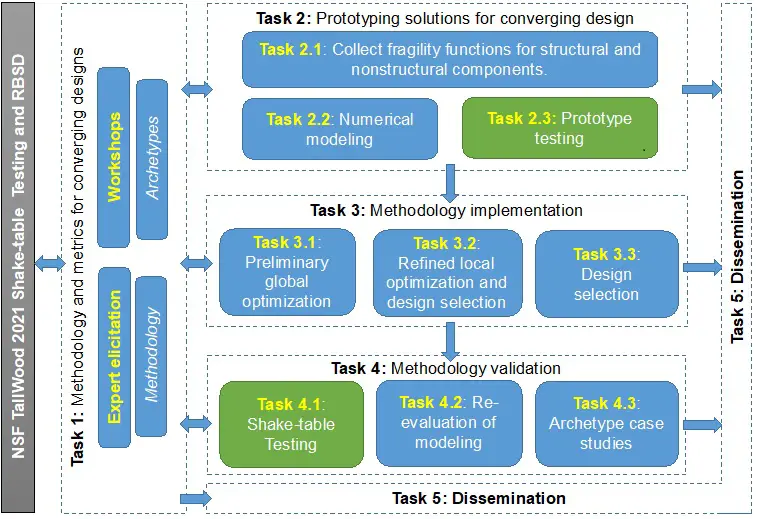
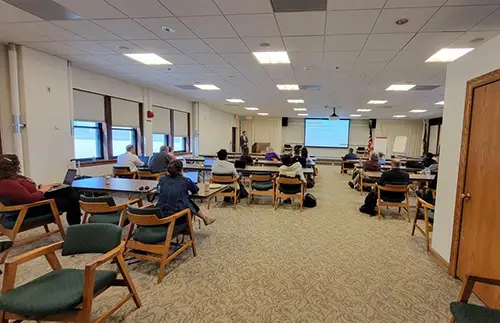
Methodology and Metrics of Converging Design
- Develop functional recovery and sustainability metrics
- Receive feedback on converging design approach and refine methodology and metrics
Expert Elicitation
Workshops
Researchers have engaged with academic and industry professionals through a series of workshops to help define and identify consensus-based metrics that inform a Converging Design Methodology, considering building resilience and sustainability as key parameters in lateral force-resisting system design optimization for mass timber construction.
Workshop 1: Functional Recovery
Date: April 11, 2022
Location: OSU satellite campus (Portland, OR) and online (zoom)
Purpose:
- Present, discuss, and solicit feedback on state-of-art functional recovery definitions and frameworks.
- Define a consensus-based group of recovery design goals and metrics for mass timber construction.
Workshop 2: Sustainability Metric
Date: September 22, 2022
Location: Forest Products Laboratory (Madison, WI) and online (zoom)
Purpose:
- Prioritize in a consensus-based manner sustainability metrics to be included in a Converging Design Methodology, specifically for mass timber construction.
Prototyping Innovative Lateral Force Resisting Systems
- Provide experimental data and numerical modeling to inform models used for Converging Seismic Design Optimization (CSDO)
- Focus on the use of innovative energy dissipation solutions to explore integration with mass timber wall systems
- Wall splice connection; experimental testing

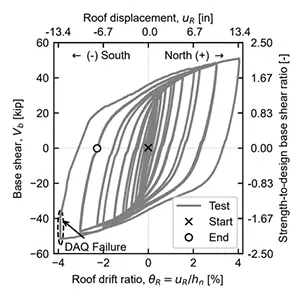
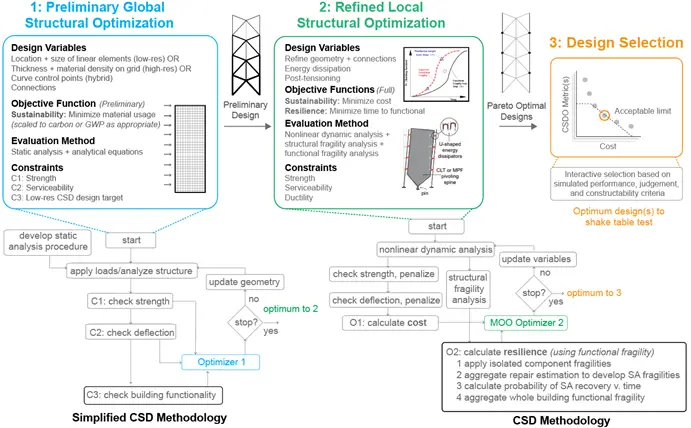
CSDO: Converging Seismic Design Optimization
- Extend RBSD methodology to include multi-objective optimization in design and sustainability metrics
- Build on exisiting work open source software enabling advanced algorithms and interoperability
Methodology Implementation
Optimization Prep – Complete
- Consolidate existing code combining optimization and structural analysis
- Determine feasible software linkages
- Establish preliminary analysis procedure
Preliminary Global Structure – In Progress
- Define geometric design space
- Define objective functions
- Develop analysis methods
- Demonstrate and evaluate optimization process
Refine Local Structural Optimization
- Incorporate system – and component-level variables into a new design space
- Define objective functions
- Develop analysis methods
- Process results
- Prepare visualizations / interface for designer interaction
- Develop module of CSDO for integration with NHERI-SimCenter
Design Selection
- Develop and test methods for objective prioritization and finalizing designs
- Design-related outreach
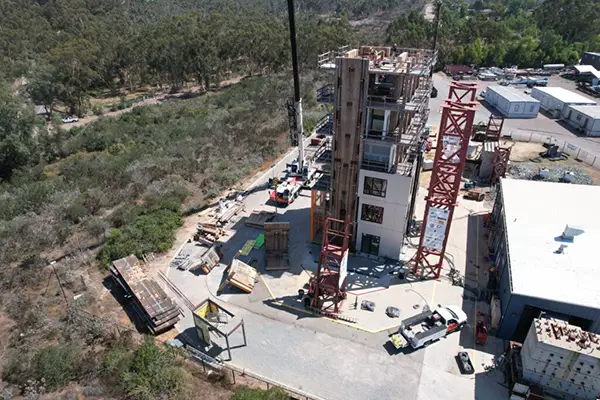
Methodology Validation
- Specimen designed, constructed, and tested at the NHERI@UCSD outdoor shake-table facility
Shake-Table Testing
Summary
This test program features the shake-table test of full-scale, mass timber, six-story structure at the National Hazards Engineering Research Infrastructure outdoor shake-table testing facility at UC San Diego (NHERI@UCSD). This structure showcases an innovative seismic lateral force-resisting system (LFRS) designed and optimized with consideration of enhanced resiliency and sustainability criteria. Testing will benchmark novel, resilient design solutions as well as their structural performance, provide data for benchmarking structural models, and inform design workflows and life-cycle analyses.
Testing will commence in early 2023 and include three phases. The first phase will begin with deconstruction of the top four stories of an existing 10-story mass timber structure. The energy dissipation devices will then be replaced and the structure will be subjected to multiple intensities of shake-table testing. In the second phase, two walls from the LFRS will be replaced with a new Innovative Lateral System (ILS) prototyped in Task 2, and the structure will be shaken once again. The final phase of testing will involve the removal of the ILS installed in the second phase, and installation of a new ILS whose design is still under development.
Once all phases are completed, the entire structure will be deconstructed and the mass timber materials repurposed for reuse. Besides benchmarking the design approach and solutions, the shake-table testing will inform numerical models that can be used in future design optimization, while also promoting sustainable mass timber solutions as a safe and resilient alternative for LFRS in seismic regions.
Dissemination and Technology Transfer
- Information from testing distributed to higher education and industry
